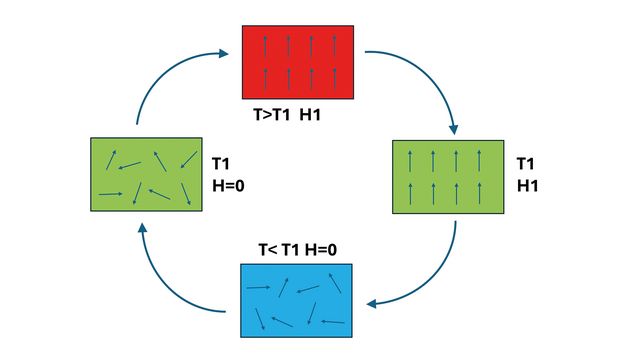Magnetocaloric effect – Characterization with the PPMS and MPMS
The magnetocaloric effect describes the interaction between magnetic and thermal properties. Materials with this effect are of interest for both fundamental research and practical applications. For example, the first commercial refrigerators that use this effect are more energy efficient.
On the basis of a recently published article in the journal Nature Communications [1], we will discuss the use of the QD systems PPMS and MPMS. The authors, under the project management of Professor G. R. Blake from Groningen, have studied the cobalt compound Co4(OH)6(SO4)2[enH2]*. This compound exhibits a gigantic magnetocaloric effect at temperatures around 10 K and could therefore be used for magnetocaloric cooling at cryogenic temperatures. Measurements with the Quantum Design systems PPMS and MPMS provided key data for the characterization.
In the experiment, researchers measured the magnetic properties DC magnetization (MPMS SQUID magnetometer), the AC susceptibility (PPMS), and the heat capacity (PPMS). From the heat capacity measurement data, they were able to determine the change in entropy of the sample, an important quantity for classifying its magnetocaloric properties. A detailed description can be found in the “open access” publication. If you have any questions about the QD systems and their measurement capabilities, please do not hesitate to contact us.
[1] J. J. B. Levinsky et al. “Giant magnetocaloric effect in a rare-earth-free layered coordination polymer at liquid hydrogen temperatures”. Nature Communications (2024)15:8559




